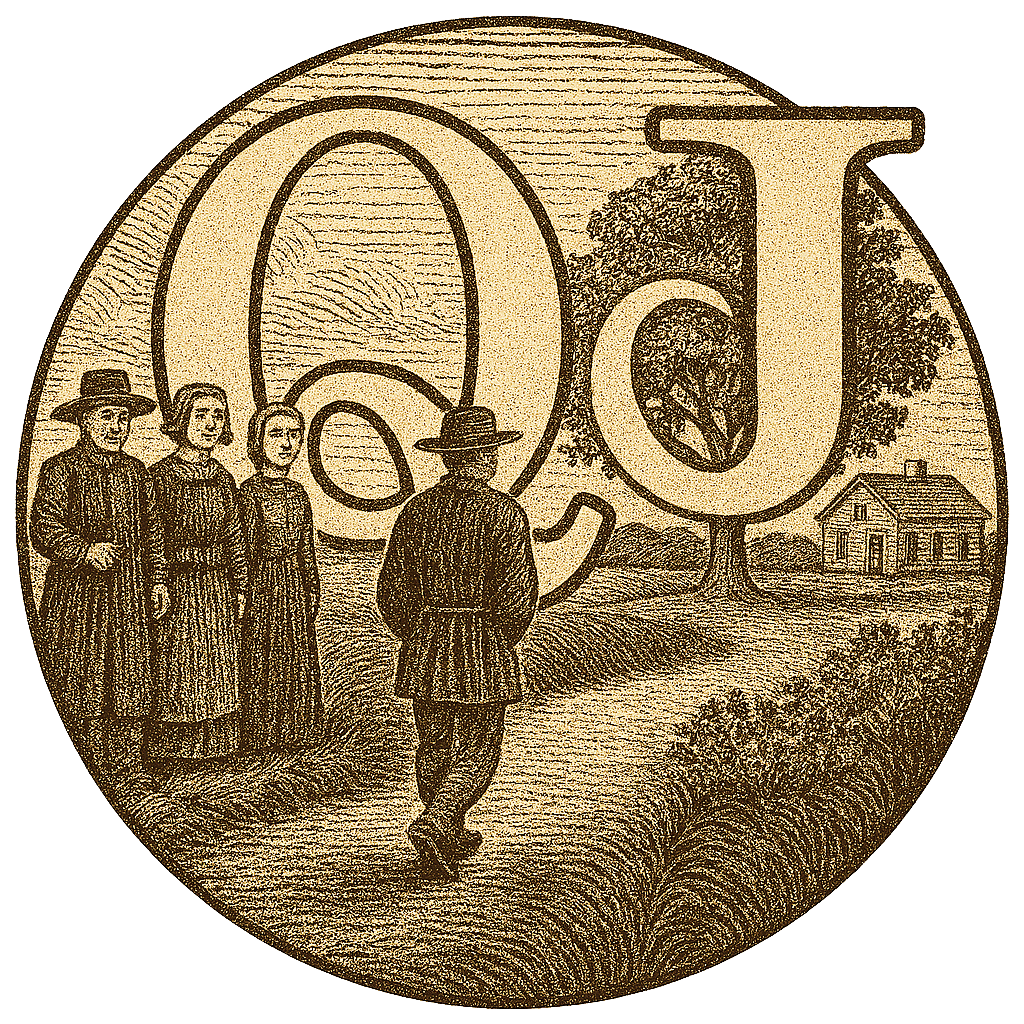
Conservative Friends and
Traditional Quaker Christianity
PART I. Introduction and History
Introduction
Conservative Friends, often known as Wilburite or Primitive Friends, constitute one of the smallest but most historically significant streams of Quakerism. Their origins lie in the religious upheavals of the nineteenth century, when Friends divided over questions of biblical authority, the Inward Light, and assimilation to broader Protestant evangelicalism. This essay traces their theological development, institutional divisions, and contemporary situation.
Early Quaker Foundations
George Fox (1624–1691) and early Friends emphasized a radical reliance on the Inward Light of Christ as the immediate teacher. In Fox’s Journal, he describes the experience of being “opened” inwardly, a state in which Christ directly teaches the believer without reliance on outward clergy.¹ This theology produced distinctive practices: silent worship, spontaneous Spirit-led ministry, rejection of sacraments (as outward shadows), and a disciplined ethic of plain dress and speech.²
First Great Schism: Hicksite–Orthodox (1827–28)
By the 1820s, tensions between urban, educated Friends and rural reform-minded ministers erupted. Elias Hicks (1748–1830) stressed the primacy of the Inward Light to the degree that some critics accused him of minimizing the divinity of Christ.³ In 1827 Philadelphia Yearly Meeting split, producing Hicksite Friends (more liberal, inwardist, reform-oriented) and Orthodox Friends (emphasizing scriptural authority and Christ’s historical work). The Hicksite split reverberated across American Quakerism.
The Wilburite–Gurneyite Controversy (1830s–50s)
Within the Orthodox wing, new divisions arose. Joseph John Gurney (1788–1847), an English Friend, promoted evangelical emphases: biblical inerrancy, substitutionary atonement, and active missionary work.⁴ John Wilbur (1774–1856), an American minister, resisted, fearing Quakerism was being assimilated into generic evangelical Protestantism.⁵ Wilbur insisted that the Inward Light remained supreme, that outward sacraments and evangelical revival methods corrupted primitive Quaker simplicity, and that plain living must be preserved.
By the 1840s–50s, this dispute had split Orthodox meetings into Gurneyite and Wilburite (later Conservative) factions. Ohio, Iowa, and North Carolina Yearly Meetings each developed Wilburite branches that survive to this day.⁶
Distinctives of Conservative Friends
Conservative Friends preserved:
Unprogrammed worship without pastors or prepared sermons.
Plain dress and speech, understood as ongoing testimony to equality and simplicity.
Scripture as a secondary authority, interpreted through the Light of Christ within.
Christ-centered mysticism, stressing sanctification and obedience rather than creedal affirmation.
Resistance to evangelical innovations such as pastors, Sunday schools, revivals, and sacraments.⁷
Comparative Analysis
Hicksite / Liberal Friends: stress universalism and social reform, often discarding plain dress and Christocentric language. Conservatives critique them as diluting Quaker spirituality.
Gurneyite / Evangelical Friends: emphasize biblical literalism and align with broader evangelical Protestantism, often using pastors and sacraments. Conservatives critique them as abandoning Quaker distinctives.
Conservative Friends: preserve an older synthesis—Christocentric, mystical, plain, unprogrammed.
Modern Era
Today three primary Conservative Yearly Meetings exist in the U.S.: Ohio (Conservative), Iowa (Conservative), and North Carolina (Conservative). Membership is small (several hundred to a few thousand). Plain dress is less common but still present, and unprogrammed Christ-centered worship continues. Conservative Friends face questions of survival in a pluralistic age, but remain a living witness to historic Quaker Christianity.
PART II. Chronological Timeline of Schisms and Yearly Meeting Developments
1652: George Fox’s vision at Pendle Hill; rise of the Quaker movement.
1660: Quaker peace testimony articulated in petition to Charles II.
1827–28: Hicksite–Orthodox Split begins in Philadelphia; spreads across U.S.
1830s–40s: Growing influence of Joseph John Gurney; evangelical emphases.
1832: John Wilbur disciplined by Rhode Island Yearly Meeting for resisting Gurneyite tendencies.
1845: First formal Wilburite separations in New England.
1850s: Splits in Ohio Yearly Meeting between Wilburites and Gurneyites.
1877: Division in North Carolina Yearly Meeting, producing a Conservative branch.
1870s–80s: Similar separations in Iowa and elsewhere.
1900s–1950s: Decline in numbers; some reunifications (e.g., New England Conservative dissolves).
Present: Three main Conservative Yearly Meetings remain: Ohio, Iowa, North Carolina. They maintain fellowship through annual gatherings.
PART III. Annotated Primary Sources
George Fox (1624–1691)
“I saw also that there was an ocean of darkness and death, but an infinite ocean of light and love, which flowed over the ocean of darkness.” (Journal, 1647).
Annotation: Fox’s mystical vision of Light conquering darkness grounds Conservative Friends’ emphasis on Christ’s inward illumination.
Elias Hicks (1748–1830)
“The Scriptures can only direct us to the fountain, the Spirit of Truth, where we may all drink for ourselves.” (Letters, 1824).
Annotation: Hicks affirms inward guidance over the Bible, a view later rejected by both Orthodox and Conservative Friends as imbalanced, though Conservatives agreed with his inwardism in part.
John Wilbur (1774–1856)
“The great danger… is that the views of Friends should become assimilated to the popular opinions of the day, and thus lose the peculiar testimony of Truth.” (Journal of the Life of John Wilbur, 1859).
Annotation: Wilbur articulates the Conservative ethos: resistance to cultural assimilation and evangelical innovations.
Joseph John Gurney (1788–1847)
“The Bible, the whole Bible, and nothing but the Bible, is the religion of Protestants.” (Letters, 1830s).
Annotation: Gurney’s Protestant biblicism marked a shift away from primitive Quaker experientialism and provoked Wilbur’s resistance.
Bibliography
George Fox, The Journal of George Fox, ed. John L. Nickalls (Cambridge: Cambridge Univ. Press, 1952).
William C. Braithwaite, The Beginnings of Quakerism (Cambridge: Cambridge Univ. Press, 1912).
Elias Hicks, Letters of Elias Hicks (Philadelphia, 1824).
Joseph John Gurney, Essays on the Evidences of Christianity (London, 1825).
John Wilbur, Journal of the Life of John Wilbur (Providence, 1859).
Thomas D. Hamm, The Transformation of American Quakerism: Orthodox Friends, 1800–1907 (Bloomington: Indiana Univ. Press, 1988).
Pink Dandelion, An Introduction to Quakerism (Cambridge: Cambridge Univ. Press, 2007).
“Conservative Friends,” Wikipedia; “Branches of Quakerism,” Quaker Information Center.

